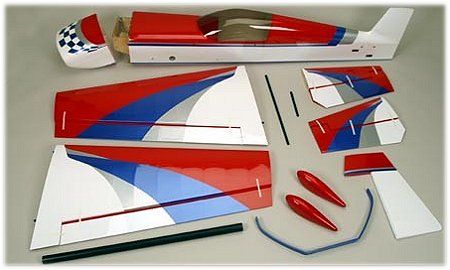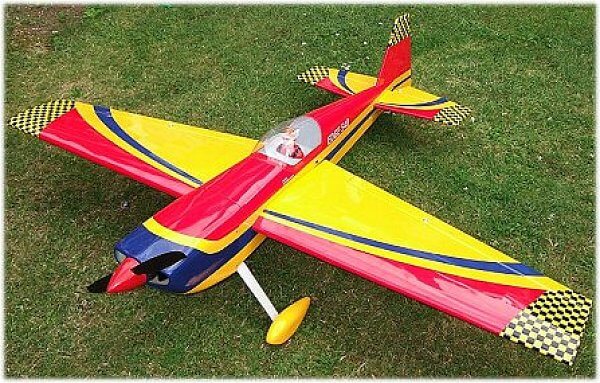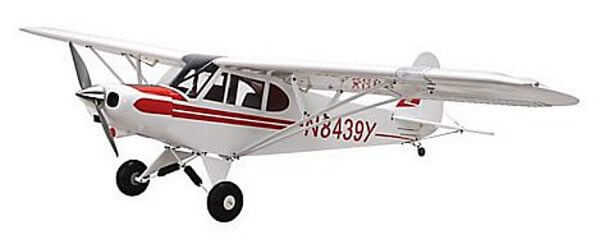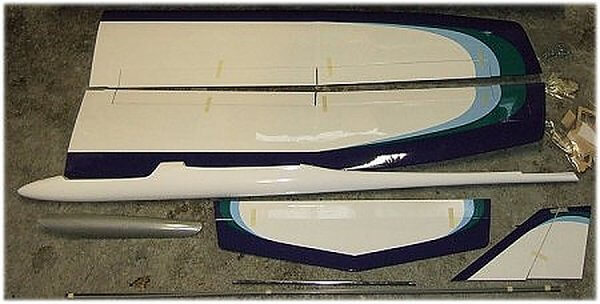ARF RC Airplanes
- an Easy Intro to Model Plane Construction
ARF rc planes are a great option if you're looking for a gentle introduction to traditional balsa/ply model plane construction and assembly.
But what are ARF airplanes?
ARF stands for Almost Ready to Fly (ARF is also called ARTF in some countries) and such planes are sold almost fully built and covered. The majority of work to be done by you is related to radio control gear and engine/motor installation (typically purchased separately).
Powertrain and radio gear installation aside, the amount of final assembly work left for you to do will vary from plane to plane, but the overall 'factory completeness' is roughly the same between manufacturers.
The photo below shows a typical ARF plane as purchased and awaiting completion, in this case an IC powered Extra 330.

ARF rc airplanes have rocketed in popularity in recent years. The vast number of ARFs on the market, from an ever-increasing number of manufacturers, reflects this trend.
Quality varies between manufacturers, of course, so it's worth doing some serious research before buying (internet forums, video sites etc.).
Names like Seagull, Hanger 9, Black Horse and Great Planes to name just a few are very reputable brands producing high-quality ARF rc airplanes.

Above: my ARF Seagull Edge 540, awaiting its maiden.
ARF RC Planes - Final Assembly
Apart from the obvious installation of engine/motor and radio gear, other things you might need to do to complete an ARF plane will likely be:
- Hinging the control surfaces.
- Fitting the landing gear.
- tailplane and fin assembly
- Fuel tank installation (if IC).
- Fitting of other peripheral hardware items.
- Servo linkages.
Control surface hinges in today's ARF kits are typically CA hinges. The trailing edge of the flying surface (wing, tailplane, fin) and leading edge of the corresponding control surface (aileron, elevator, rudder) will be already slotted and you just need to glue the hinge in place with thin cyanoacrylate (CA) glue.
It's a quick and easy job, you simply slide the dry hinge into its slot and put a few drops of the glue onto it. The material the hinge is made of means the thin glue wicks (soaks) into the hinge and surrounding balsa, fixing the hinge securely in place.
A comprehensive instruction manual should come with your ARF plane, to give you step-by-step instructions aided by clear photographs. So even if you have no or little modelling experience, you should be in with a fair chance of completing your ARF successfully by reading through and carefully following the manual.
If you do have any doubts then consulting a fellow modeller, hobby shop staff or seeking advice on a forum (RC Groups, RC Universe etc.) would be the best thing to do.
If you already have modelling experience then completing an ARF rc plane shouldn't prove too much of a challenge at all.
Power Type
It's probably fair to say that a larger proportion of ARF airplanes were internal combustion powered (IC - glow plug, petrol etc.) in the early days of ARF manufactured kits.
But nowadays electric power (EP) has become equally as popular, if not more so.
Indeed, many ARFs originally intended for IC power have been converted to electric power. My Seagull Edge 540, for example, was intended for a 46-55 glow plug engine but I converted it to electric power without too many complications.
Such is today's popularity of electric power, most manufacturers actually include component options for both power types, so you're free to decide which one you want to go with.
There are of course also EP-specific ARFs available, a very nice example is the E-flite Super Cub, shown below.
The Super Cub is one of the favourites and E-flite a very well respected and popular brand, producing some very nice ARF rc planes.

ARF aircraft also include gliders (the non-powered type), and there are some great models out there. The obvious beauty here is that you don't have to worry about which suitable powertrain components to purchase!
In my hanger is a Great Planes Spirit Elite ARF which is an excellent kit that went together very well. Here's a pic of the glider out the box awaiting assembly...

ARF Combos
If you're fortunate enough to find one, an ARF combo deal is a good option.
This is the plane in ARF form sold with a suitable engine/motor and radio gear. This just leaves you to do the installation and finishing work, without having to worry about which motor and rc set to buy.
This is a great way to purchase an ARF because it ensures a perfect match across all components, and almost always works out cheaper than buying the kit, motor and radio gear separately.
Such combo deals are rare, but it's always worth asking a seller if he can put a package together for you.
On a final note, don't be fooled in to thinking that buying an ARF rc airplane is a cheap way of entering the hobby.
The purchase of an ARF kit, radio gear and powertrain components will almost never cost less than a Ready To Fly rc plane. Indeed, the cost of all necessary items to complete an ARF can potentially be more than the plane itself, and that's an important point to remember when considering which type of kit to buy.
That said, ARF rc airplanes are an excellent introduction to understanding basic model plane building techniques, without jumping in at the deep end and building everything from a kit of parts and a plan.
If you like the idea of a traditionally constructed balsa/ply radio control plane over a foam RTF one, but don't have the time or skills to build one yourself, an ARF plane is indeed the perfect answer!
